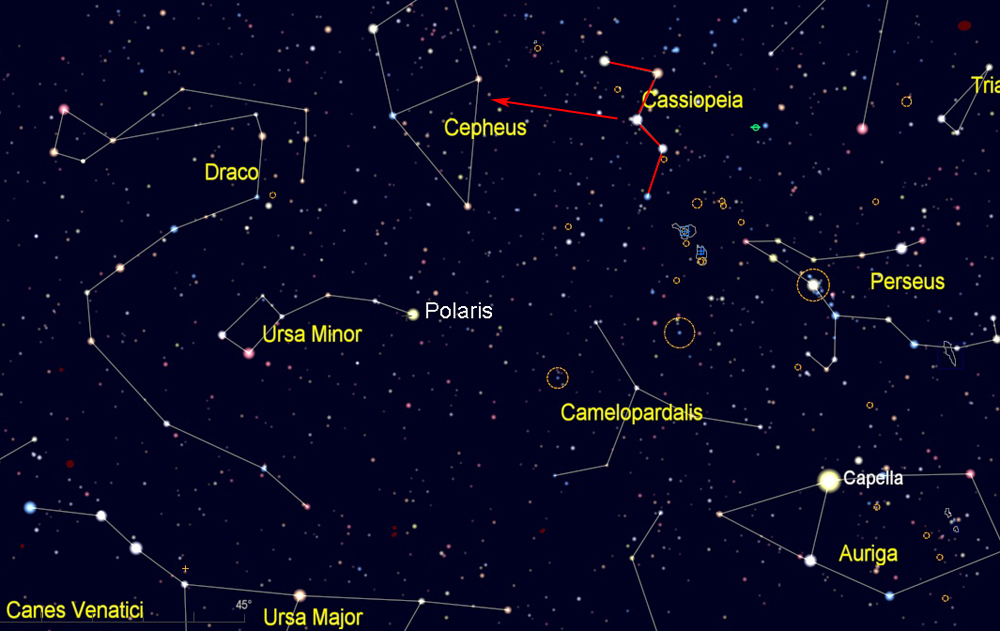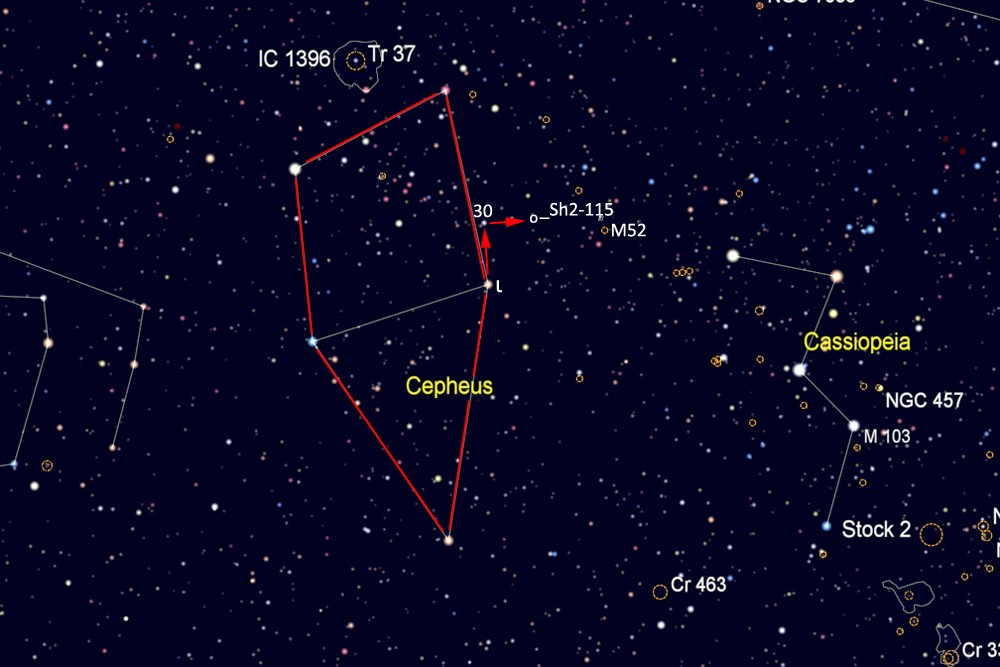Find the constellation Cassiopeia, which has a distinctive "W" shape (although its orientation changes at different times of year as it circles the north celestial pole). On fall evenings, look for Cassiopeia in the northeast, where its tilt makes it look like a "3", and in the winter look high in the north above Polaris, where it is oriented like an "M".
As shown below, use the stars of Cassiopeia to direct you to the nearby constellation Cepheus. It has the shape of a house with a pointy roof, though the house appears upside down when Cepheus is high in the sky above Polaris.

First locate the upside-down house formed by the five brightest stars of Cepheus. Visualize a line down the side of the pointy roof that is closest to Cassiopeia, and extend this line about 3 degrees from the end of the roof. The brightest star in this area is 30 Cephei, magnitude 5.2. From 30 Cephei, make a right turn and move about 2 degrees to reach the area of the Cave Nebula. Look for a very faint nebula in the shape of a "C". Using a nebula filter will improve your chances of seeing this challenging object.
